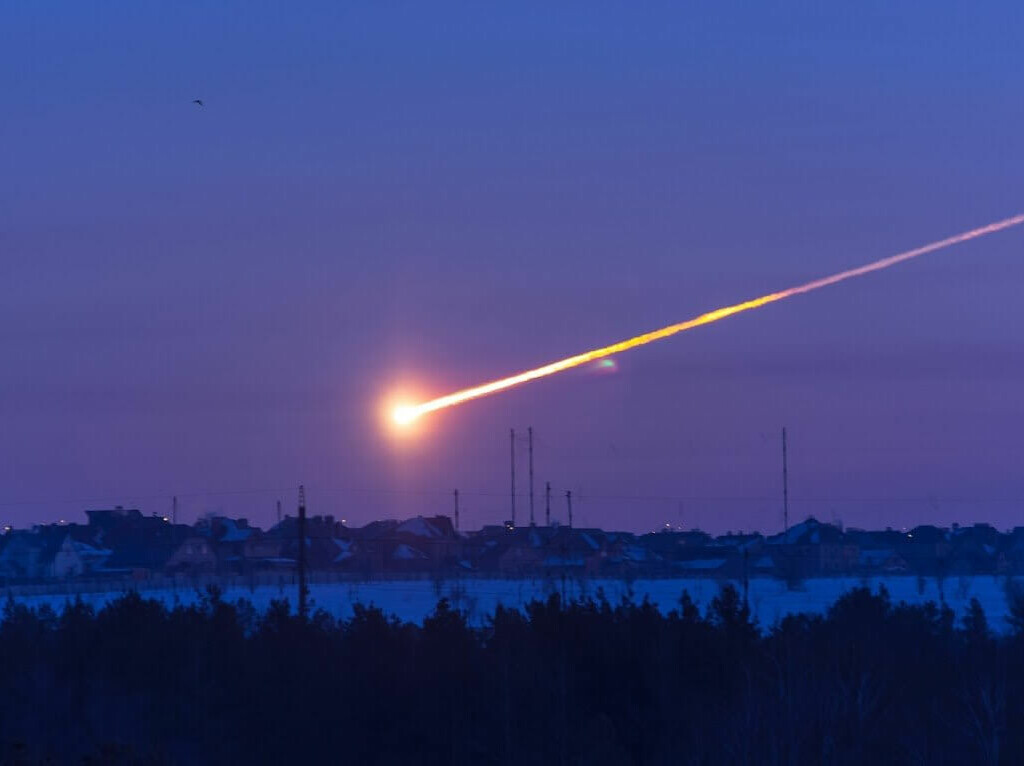On February 15, 2013, a meteorite shocked the world by exploding over the skies of Chelyabinsk, Russia. This event, which left thousands injured and caused significant material damage, sparked numerous theories and studies about its origin and consequences. Discover how this phenomenon impacted us and what we have learned since then.
The Explosion in the Russian Sky: The Chelyabinsk Meteorite
On February 15, 2013, the sky over Chelyabinsk, a city in the Ural Mountains of Russia, was lit up by a blinding flash. A meteorite approximately 17 meters in diameter and weighing 10,000 tons entered the Earth’s atmosphere at a speed of 19 kilometers per second. This natural phenomenon took the region and the world by surprise, leaving a trail of destruction and scientific curiosity.
At 9:20 in the morning, local time, the Chelyabinsk meteorite made its dramatic entrance. The explosion occurred over the Chelyabinsk Oblast region, specifically near Lake Chebarkul. The meteor’s light was visible over 100 kilometers away and many witnesses reported feeling intense heat as the meteor streaked across the sky.
As a superbolide, the meteorite exploded in the air at an altitude of approximately 30 kilometers. The explosion generated a shockwave 30 times more powerful than the atomic bomb dropped on Hiroshima. Following this, fragments of the meteorite fell to Earth, creating numerous minor impacts across the region.
The meteorite’s explosion caused significant damage to local infrastructure. More than 7,200 buildings in six cities were affected, including homes, schools and hospitals. The Ice Palace in Chelyabinsk suffered severe structural damage, with the total cost of the damage estimated at $33 million.
As for the people, approximately 1,500 residents sought medical attention due to injuries caused by shattered glass and the shockwave. Fortunately, there were no fatalities. Among the notable stories, one teacher protected her students by ordering them to take cover under their desks, sustaining injuries herself in the process.
This extraordinary event not only left a physical impact on the region but also had a profound psychological effect on its inhabitants. The international community observed with amazement and appreciation as local authorities managed the emergency swiftly and effectively.
The Immediate Impact: Devastation and Response
A shockwave generated by the Chelyabinsk meteorite had immediate and devastating effects. This explosion shattered windows and damaged structures over a wide area, leaving thousands of people vulnerable to the intense cold of February in the Urals.
To address the situation, emergency response teams acted swiftly. Rescue teams and volunteers worked tirelessly to repair the damage and assist the injured. Immediate measures were taken to cover broken windows and provide shelter for those affected.
In the long term, the event left a psychological mark on the community. Many residents reported feelings of fear and anxiety following the event, fearing similar future catastrophes. On a positive note, however, the event also sparked an increase in interest in astronomy and science, with many seeking a better understanding of cosmic phenomena.
Theories and Myths: Understanding the Chelyabinsk Meteorite
The impact of the Chelyabinsk meteorite not only generated scientific data but also numerous theories and myths. Some people suggested that the meteorite might have been a covert military test or even a divine act.
These speculations spread quickly on social media, fueled by the initial lack of clear information.
One prominent theory was the possible connection between the Chelyabinsk meteorite and asteroid 2012 DA14, which passed close to Earth on the same day. However, scientists confirmed that the two events were unrelated, as their trajectories were significantly different.
Experts like astronomer Eddie Salazar Gamboa proposed that the Chelyabinsk meteorite might have been a fragment of another asteroid or the result of an internal explosion in asteroid 2012 DA14.
Lessons Learned: The Need for Early Warning Systems
The Chelyabinsk event underscored the importance of developing early warning systems to detect near-Earth objects. Since then, significant advances have been made in the monitoring and tracking of asteroids.
Projects like NEOWISE and the Asteroid Terrestrial-impact Last Alert System (ATLAS) have improved our ability to predict and prepare for future impacts.
At an international level, collaborations have been proposed to create a global early warning network that would allow for a coordinated response to similar events. These measures include the development of advanced technologies to deflect asteroids and protect the planet from potential catastrophic collisions.
The Chelyabinsk meteorite was a stark reminder of our planet’s vulnerability to cosmic events and the need to be prepared. International cooperation and technological advancement are essential to mitigating risks and protecting humanity from future threats from space.
Chelyabinsk: A Reminder of Our Cosmic Vulnerability
The impact of the Chelyabinsk meteorite in 2013 was an extraordinary event that left a lasting mark both on the Ural region of Russia and on global consciousness.
The explosion not only caused significant material damage and numerous injuries but also highlighted our planet’s vulnerability to unexpected cosmic events.
This phenomenon generated great scientific interest and numerous theories about its origin and its connection to asteroid 2012 DA14. However, the most important takeaway is that it underscored the need to improve our early warning systems and international cooperation to prevent and mitigate future cosmic disasters.
The swift and effective response of local authorities and the international community was crucial to Chelyabinsk’s recovery. As we move forward, it is vital to continue investing in research and the development of technologies that will allow us to detect and deflect potential threats from space.
The Chelyabinsk event not only reminded us of our fragility but also of our capacity for resilience and adaptation. Through science, cooperation and preparedness, we can face and overcome the challenges that the cosmos presents us.





